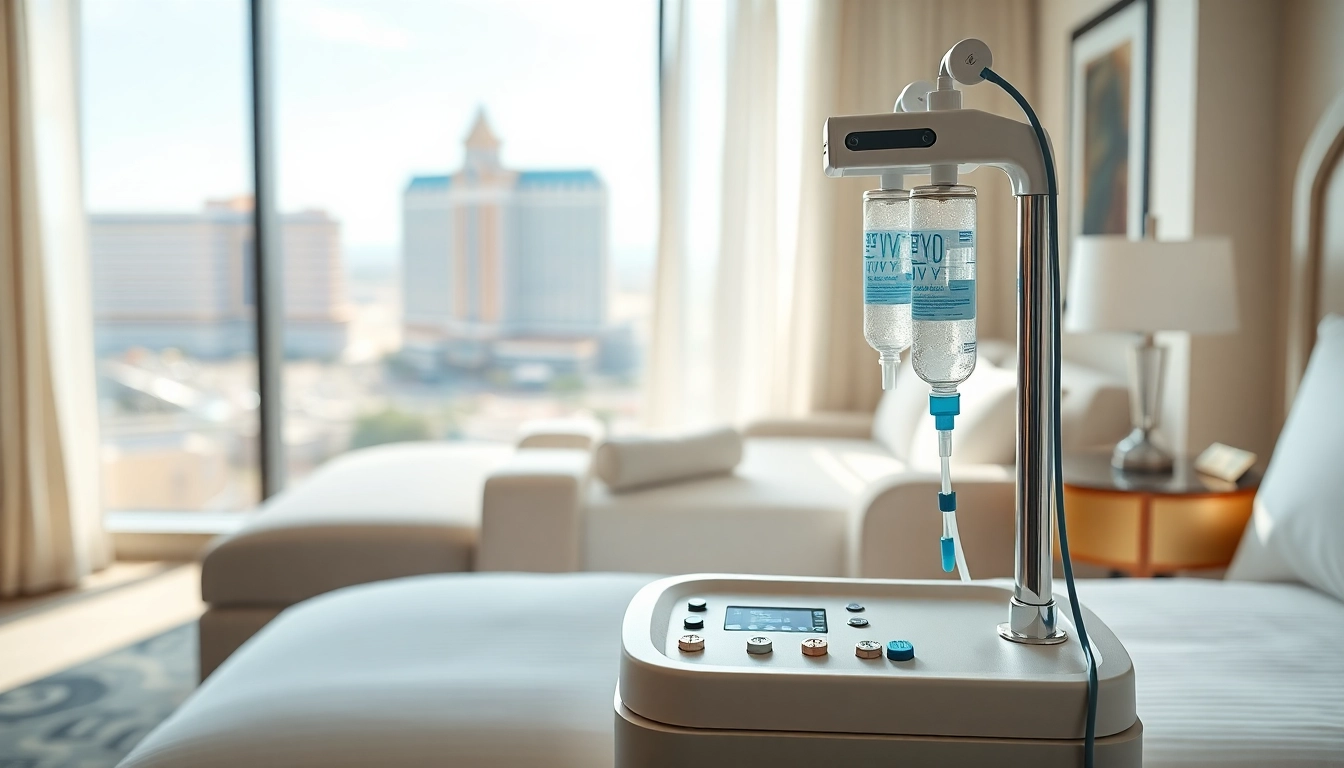Understanding Mobility Equipment: Types and Benefits
1. What is Mobility Equipment?
Mobility equipment encompasses various devices designed to assist individuals with mobility challenges, whether due to aging, injury, or other health conditions. This equipment can range from simple tools, such as canes and walkers, to advanced technologies like powered wheelchairs and mobility scooters. The purpose of mobility equipment is not only to enhance physical movement but also to promote independence, improve quality of life, and ensure safety while moving.
In today’s fast-paced world, access to proper mobility equipment can profoundly influence one’s ability to engage in daily activities, socialize, and participate in community events. It plays a critical role in the lives of individuals with disabilities, the elderly, and anyone needing temporary support during recovery.
2. Key Benefits of Using Mobility Equipment
The advantages of utilizing mobility equipment are numerous and varied. Firstly, they provide essential support that enhances stability and aids in maintaining balance, which is vital for preventing falls. Secondly, these devices can significantly reduce physical strain on caregivers by facilitating safer transfers and assisting with mobility. Furthermore, using mobility equipment can lead to increased activity levels, encouraging users to engage in physical exercises tailored to their abilities.
Additionally, many users report improvement in their mental well-being as they feel more confident and less restricted in their movements. This empowerment can lead to better social interactions, decreased feelings of isolation, and overall enhanced life satisfaction. In essence, mobility equipment serves as a bridge to greater independence and active living.
3. Types of Mobility Equipment: A Comprehensive Guide
*There are several categories of mobility equipment, each serving unique purposes. Understanding the types available can help individuals make informed choices about their specific needs.*
- Canes and Crutches: These are among the most basic mobility aids, providing support and stability for individuals who may need help with balance.
- Walkers: Offering more support than canes, walkers have four legs for enhanced stability and can be equipped with wheels for smoother movement.
- Wheelchairs: Available in both manual and powered varieties, wheelchairs accommodate those who cannot walk or travel long distances independently.
- Mobility Scooters: These battery-operated devices are ideal for outdoor use and provide a comfortable means of transportation for individuals with limited mobility.
- Lifts and Ramps: For those requiring assistance with navigating steps or elevated areas, lifts, and portable ramps facilitate safer transitions.
- Standing Frames and Support Devices: These assist individuals in adopting various postures, thereby improving mobility and engagement during daily activities.
- Bathing and Toileting Aids: Specialized equipment like shower chairs and raised toilet seats enhance safety and comfort in critical areas of daily living.
Choosing the Right Mobility Equipment for Your Needs
1. Assessing Individual Mobility Needs
Selecting the appropriate mobility equipment starts with a thorough assessment of individual needs. Factors like physical capabilities, living environment, and specific health conditions must be considered. Consultation with healthcare professionals, such as physiotherapists or occupational therapists, can provide valuable insights into the most suitable options for enhancing mobility.
Understanding the extent of mobility challenges is crucial. For instance, someone who experiences minor balance issues may only need a cane, while an individual with more severe disabilities might require a wheelchair or a scooter for greater independence. Conducting a home assessment can also help identify obstacles that might need addressing when choosing mobility solutions.
2. Factors to Consider When Selecting Equipment
When choosing mobility equipment, several factors must be taken into account to ensure it meets the user’s requirements effectively. These include:
- Weight Capacity: Each device has a designated weight limit that should match or exceed the user’s weight to ensure safety and durability.
- Size and Portability: Consideration of the user’s living space and how easily the equipment can be transported or stored is essential, particularly for those who travel frequently.
- Ease of Use: The mobility device should be easy to maneuver and operate, particularly for users who may not have experience with such equipment.
- Features and Customization: Some equipment offers adjustable height or specialized features, like folding capability, which may be beneficial depending on the user’s lifestyle.
- Budget: While investing in quality mobility equipment is important, cost should be balanced with features and the potential for financial assistance or insurance coverage.
3. Common Mistakes to Avoid in Your Choice
Many individuals make mistakes when selecting mobility equipment that can hinder their ability to use it effectively. Here are a few common pitfalls:
- Rushing the Decision: Take time to explore different options and understand how each can meet your needs.
- Not Involving Professionals: Skipping consultations with healthcare professionals can lead to inappropriate choices.
- Ignoring Future Needs: Consider future mobility changes or health conditions that may affect mobility requirements, ensuring your selection remains relevant.
- Neglecting User Comfort: Equipment should not only be functional but also comfortable to use regularly.
Maintaining and Caring for Your Mobility Equipment
1. Routine Maintenance Tips for Longevity
Regular maintenance is essential for ensuring the longevity and reliability of mobility equipment. Here are some key maintenance practices:
- Regular Inspections: Routine checks for wear, loose bolts, and operational conditions can help identify potential issues before they escalate.
- Lubrication: For devices such as wheelchairs and scooters, keeping moving parts lubricated can prevent rust and enhance functionality.
- Battery Care: For powered devices, periodic battery checks and following proper charging protocols are critical to longevity.
- Storage Practices: When not in use, store your mobility equipment in a clean, dry place to avoid moisture damage.
2. Best Practices for Cleaning Mobility Equipment
Cleanliness is critical not only for aesthetic purposes but also for the health and safety of users. Here are some guidelines:
- Use Mild Detergents: When cleaning, opt for mild soaps or disinfectants suitable for the material of the mobility device.
- Focus on High-Touch Areas: Regularly sanitize handles, armrests, and footrests to prevent the spread of germs.
- Avoid Harsh Chemicals: Strong solvents can damage surfaces and finishes; therefore, avoid using them when cleaning.
- Check Instruction Manuals: Review the manufacturer’s guidelines to ensure the proper cleaning techniques are followed.
3. Signs Your Equipment Needs Repair or Replacement
Recognizing when mobility equipment needs repair or replacement is crucial for safety and functionality. Signs include:
- Decreased Performance: If the equipment is not functioning as effectively as it previously did, it may need servicing.
- Visual Wear: Noticeable scratches, rust, or structural deformities can indicate a need for repair or complete replacement.
- Frequent Breakdowns: If the device requires repeated repairs, considering a new model might be the more cost-effective solution.
- Changes in Physical Needs: As the user’s mobility requirements evolve, the existing equipment may no longer meet their needs adequately.
Innovations in Mobility Equipment Technology
1. New Trends in Mobility Solutions
The field of mobility equipment continues to evolve, driven by technological advancements that cater to the changing needs of users. Some recent trends include:
- Lightweight Materials: New developments in materials science have led to lighter, yet durable options for wheelchairs and walkers.
- Smart Mobility Solutions: Devices are increasingly integrated with technology, featuring GPS tracking, obstacle detection, and Bluetooth connectivity to enhance usability.
- Sustainability: More companies are focusing on environmentally friendly production methods, utilizing recycled materials in the manufacturing of mobility aids.
2. How Smart Technology is Changing Accessibility
As smart technology becomes commonplace, mobility equipment is being enhanced to include features that support greater independence. For instance:
- App Integration: Users can monitor their equipment’s performance and health through dedicated apps, receiving alerts for maintenance needs or battery life.
- Adaptive Controls: Advanced controls allow for easier maneuverability, enabling users to dictate their mobility experience.
- Telemedicine Capabilities: Some devices are now designed to coordinate with remote healthcare consultations, offering vital data to medical professionals monitoring patient mobility.
3. Future Developments to Watch in Mobility Equipment
The future of mobility equipment looks promising, as researchers and manufacturers continue to innovate. Anticipated advancements include:
- AI-Driven Devices: Artificial intelligence may play a role in personalizing mobility solutions based on user behavior and preferences.
- 3D Printing: Custom-made mobility aids could become more prevalent, allowing for tailored solutions that fit each user’s specific needs with precision.
- Autonomous Mobility Aids: Research is underway into fully autonomous wheelchairs and scooters that can navigate environments without user input.
Resources and Support for Mobility Equipment Users
1. Finding Local Resources and Assistance Programs
Finding resources and support services can significantly enhance the experience of mobility equipment users. Local organizations, health services, and community centers often provide essential resources, including:
- Equipment Loan Programs: Some communities offer short-term loans or rentals of mobility equipment, enabling users to test options without a financial commitment.
- Adaptive Technology Support: Local tech workshops may provide valuable assistance in adapting devices to user needs.
- Support Groups: Community meet-ups can facilitate connections among users and sharing of experiences, further providing emotional and resource support.
2. Online Communities and Forums for Mobility Equipment Users
The internet offers a wealth of resources for those seeking information, community support, and shared experiences. Online platforms such as forums and social media groups allow users to:
- Share Experiences: Users can share their stories, successes, and challenges, fostering a network of support.
- Seek Advice: Many communities provide a platform for users to ask questions and receive advice on selecting equipment or troubleshooting issues.
- Access Educational Resources: Members often share articles, tips, and guides to navigating the world of mobility aids.
3. Financial Assistance Options for Purchasing Equipment
Understanding financial aid options can help ease the burden of purchasing mobility equipment. These may include:
- Government Subsidies: Some local and federal programs offer grants or subsidies to help with the costs of mobility equipment.
- Insurance Coverage: Many health insurance plans cover part or all of the costs associated with mobility aids, depending on medical necessity.
- Non-Profit Organizations: Various charities and organizations provide financial support or equipment to those in need, helping to fill gaps in coverage.



